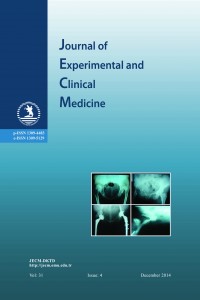Abstract
References
- Ananthanarayan, C., Sigal, M., Godlewski, W., 1998. General anesthesia for the provision of dental treatment to adults with developmental disability. Anesth. Prog. 45, 12-17.
- Bragg, C., Miller, B., 1990. Oral ketamine facilitates induction in a combative mentally retarded patient. J. Clin. Anesth. 3, 121. doi:10.1016/0952- 8180(90)90065-B.
- Caloss, R., Lard, M.D., 2004. Anesthesia for office-based facial cosmetic surgery. Atlas Oral Maxillofac. Surg. Clin. North Am. 12, 163-177. doi:10.1016/j.cxom.2003.10.001.
- Carrel, R., 1973. Ketamine: A general anesthetic for manageable ambulatory patients. J. Dent. Child. 28, 446.
- Continuum of depth of sedation. Definition of general anesthesia and levels of sedation/analgesia, 2004, of the American Society of Anesthesiologists (ASA). Guidelines for the use of sedation and general anesthesia by dentists. As adopted by the October 2007 ADA House of Delegates.
- Guidelines for the use of sedation and general anesthesia by dentists. As adopted by the October 2007 ADA House of Delegates. http://www.ada. org/~/media/ADA/About%20the%20ADA/Files/anesthesia_use_guidelines.ashx.
- Gullikson, J., 1973. Oral findings in children with Down’s syndrome. J. Dent. Child. 40, 293.
- Hagberg, C., Georgi, R., Krier, C., 2005. Complications of managing the airway. Best Pract. Res. Clin. Anaesthesiol. 19, 641-659. doi:10.1016/j. bpa.2005.08.002.
- Haywood, P.T., Karalliedde, L.D., 1999. General anesthesia for disabled patient in dental practice. Anesth. Prog. 45, 134-138.
- Johnson, R., Machen, J.B., 1973. Behavior modification techniques and maternal anxiety. J. Dent. Child. 40, 272.
- Messieha, Z., 2009. Risks of general anesthesia for the special needs dental patient. Spec. Care Dentist. 29, 21-25. doi:10.1111/j.1754- 4505.2008.00058.x.
- Nolan, J., Chalkiadis, G.A., Low, J., Olesch, C.A., Brown, T.C., 2000. Anaesthesia and pain management in cerebral palsy. Anesthesia. 55, 32- 41. doi:10.1046/j.1365-2044.2000.01065.x. Yılmaz et al.
Anesthetic management of dental procedures in patients with special needs: A retrospective analysis of 519 patients in North of Turkey
Abstract
Special need patients have increased risk for oral diseases throughout their life. Sedation and general anesthesia is generally the preferred treatment for special needs patients though it provides optimal conditions for dental treatment. This study was aimed to describe our anesthetic experience in dental treatments of 519 special needs patients at a dental faculty in the north side of Turkey during a three-year period. The data referring to patient’s demographic information, anesthetic techniques, agents, dental treatment duration and the type of dental procedure during the period from 2009 to 2012 were retrospectively collected. All of the patients had moderate or severe intellectual disability, and not cooperating fully with dental treatment. There were for different anesthetic techniques in application: face mask, face mask combined with intravenous sedation, total intravenous anesthesia, and nasal entubating general anesthesia. Two intravenous (IV) anesthesic agent, Propofol (Propofol) and Midazolam (Dormicum) were used either alone or combined. Sevoflurane (Sevorane) was used as inhalation anesthesia and Vecuronium bromide (Norcuron) was used in patients that require nasal entubation. The mean age was 19 yr (range 3 to 81), and males predominated females by a ratio of 271Ä248. Of 519 patients, 204 patients were ASA grade 1, 315 patients were ASA grade 2. Cognitive impairments include; Alzheimer disease (1 patient) and dementia (1 patient). Central nervous system disorders (CNS) include; ataxia (1 patient), autism (38 patients), cerebral palsy (7 patients), hydrocephaly (1 patient), multiple sclerosis (1 patient). Specific syndromes include; Down syndrome (35 patients), Epidermolysisbullosa (1 patient), Reye’s syndrome (1 patient). Only minor complications such as nose bleeding, nausea/vomiting, restlessness, dizziness, shivering and desaturation (saturation under 90) were seen during the immediate postoperative period. A multidisciplinary approach between the dentist and anesthesiologist are important to manage successful treatment of these patients.
Keywords
Anesthetic management Dental treatment General anesthesia Sedation Patients with special needs
References
- Ananthanarayan, C., Sigal, M., Godlewski, W., 1998. General anesthesia for the provision of dental treatment to adults with developmental disability. Anesth. Prog. 45, 12-17.
- Bragg, C., Miller, B., 1990. Oral ketamine facilitates induction in a combative mentally retarded patient. J. Clin. Anesth. 3, 121. doi:10.1016/0952- 8180(90)90065-B.
- Caloss, R., Lard, M.D., 2004. Anesthesia for office-based facial cosmetic surgery. Atlas Oral Maxillofac. Surg. Clin. North Am. 12, 163-177. doi:10.1016/j.cxom.2003.10.001.
- Carrel, R., 1973. Ketamine: A general anesthetic for manageable ambulatory patients. J. Dent. Child. 28, 446.
- Continuum of depth of sedation. Definition of general anesthesia and levels of sedation/analgesia, 2004, of the American Society of Anesthesiologists (ASA). Guidelines for the use of sedation and general anesthesia by dentists. As adopted by the October 2007 ADA House of Delegates.
- Guidelines for the use of sedation and general anesthesia by dentists. As adopted by the October 2007 ADA House of Delegates. http://www.ada. org/~/media/ADA/About%20the%20ADA/Files/anesthesia_use_guidelines.ashx.
- Gullikson, J., 1973. Oral findings in children with Down’s syndrome. J. Dent. Child. 40, 293.
- Hagberg, C., Georgi, R., Krier, C., 2005. Complications of managing the airway. Best Pract. Res. Clin. Anaesthesiol. 19, 641-659. doi:10.1016/j. bpa.2005.08.002.
- Haywood, P.T., Karalliedde, L.D., 1999. General anesthesia for disabled patient in dental practice. Anesth. Prog. 45, 134-138.
- Johnson, R., Machen, J.B., 1973. Behavior modification techniques and maternal anxiety. J. Dent. Child. 40, 272.
- Messieha, Z., 2009. Risks of general anesthesia for the special needs dental patient. Spec. Care Dentist. 29, 21-25. doi:10.1111/j.1754- 4505.2008.00058.x.
- Nolan, J., Chalkiadis, G.A., Low, J., Olesch, C.A., Brown, T.C., 2000. Anaesthesia and pain management in cerebral palsy. Anesthesia. 55, 32- 41. doi:10.1046/j.1365-2044.2000.01065.x. Yılmaz et al.
Details
| Primary Language | English |
|---|---|
| Subjects | Health Care Administration |
| Journal Section | Basic Medical Sciences |
| Authors | |
| Publication Date | January 30, 2015 |
| Submission Date | May 2, 2014 |
| Published in Issue | Year 2014 Volume: 31 Issue: 4 |
Cite

This work is licensed under a Creative Commons Attribution-NonCommercial 4.0 International License.


